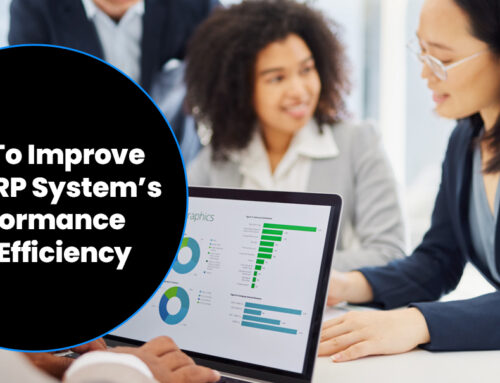
An enterprise resource planning (ERP) software platform deployment typically represents the culmination of many months of hard work, careful preparation and strategic challenges. The benefits of combining multiple, disparate enterprise software systems into a single, centralized ERP platform can be tremendous — bordering on immeasurable — but it takes a great deal of planning to achieve a successful rollout. In short, a company needs a well-architected ERP implementation strategy.
There are many different ERP implementation strategies to consider as you prepare to dive into this process. And each enterprise software implementation strategy must have several components if you are going to see success, with minimal pitfalls.
Why Do I Need to Consider ERP Implementation Strategies?
ERP implementations are complex, multi-month endeavors that hold the power to impact virtually every division or department within a company. Remember, you are combining multiple software systems into a single, centralized platform that will have new workflows and processes that are performed using an unfamiliar user interface. This alone holds the potential for tremendous chaos if you fail to plan and execute properly. What’s more, the typical ERP platform usually requires at least a dozen third-party integrations and more than a few customizations to suit an organization’s unique needs and requirements.
Stated simply, ERP implementation projects are very comprehensive and with the potential to affect mission-critical systems and productivity (read: your bottom line), a solid strategy is a must-have. This is true whether you are a startup launching a relatively small cloud-based ERP system or a massive corporation that is preparing to deploy a massive enterprise software system across all of its divisions.
Overall ERP Implementation Strategies
A company’s ERP implementation strategy should be considered as a whole and by its components. A typical ERP implementation strategy will include several different parts.
- ERP Configuration
- Integrations
- User Training
- Deployment
ERP Implementation Strategies for Configuration
Customizability is one of the most significant advantages that a business will enjoy as they shift to an enterprise resource planning software system. ERP platforms can be configured to accommodate virtually any business type and all of its various departments and divisions.
Your ERP implementation strategy must address this customization. How will your ERP platform be configured? What features and functionalities will it have in each module? What metrics and analytics will you be pulling into dashboard format? What permissions will you assign to each user role? Best practice is to ensure that a user has access to the areas that they need to access — nothing more and nothing less. Third-party integrations and integrations with in-house systems that will not be replaced by this new ERP platform must also be considered. That brings us to our next component of the ERP implementation strategy: integrations.
ERP Implementation Strategies for Integrations
Integrations can be a challenging aspect of the ERP implementation process because you have multiple, third-party platforms that may or may not have APIs available to facilitate an integration. Plus, many of these integrations are mission-critical — integrations whereby downtime just isn’t acceptable. Businesses must also consider in-house integrations with custom software and any other platforms that will be retained.
The first step is to identify any and all integrations that will need to be re-established in the ERP system. This alone can be a tremendous challenge since you are working with multiple divisions and departments and you generally won’t find a single individual who knows about all of the current integrations that are in place. Identifying all of the current in-house and third-party integrations usually requires more than a little “digging” and investigation.
Once you identify all current and desired integrations, it is a matter of determining how the integration will be achieved (i.e. does an API already exist?) and when to initiate the integration process. In some cases, you may need to finalize the integration at the time of deployment. This is necessary in cases where only one integration is permitted, meaning you will need to swap the integration from the old software system to the new ERP platform right when it’s rolled out. Fortunately, most third-party platforms allow for integration with the new enterprise software before deployment day. This makes way for the final step in the process: testing to verify that the integration is working properly. Testing is imperative if you are to avoid downtime so remember to include testing in your implementation strategy.
ERP Implementation Strategies for Training
Training is a key component of your ERP implementation strategy because without proper user training, deployment day is apt to become an unmitigated disaster.
A good first step is to select your training “superusers” — leaders within each department or division who receive comprehensive training on the ERP platform in advance of everyone else. These superusers will be instrumental, providing support to their colleagues during the training process and after deployment. The process of training the superusers is also beneficial because it provides the ERP training team with a better feel for the company’s training needs.
It is also prudent to develop a training plan, which includes scheduling that will minimize disruption to daily operations. Training in small groups for just a couple hours at a time is generally the best approach, but you should work with the ERP training team to identify the strategy that will align with their teaching methodology.
ERP Implementation Strategies for Deployment
ERP deployment day can be rather frightening. You are turning off multiple software systems and shifting to a new platform — a prospect that can cause lots of chaos and downtime if you fail to execute properly. Preparation is key to a smooth deployment, necessitating a comprehensive strategy that considers all aspects of the rollout process.
Firstly, you will need to decide whether you are going with a phased deployment or a single non-phased deployment. It’s a bit like deciding whether to slowly peel off a band-aid or rip it off in one swift tug. You will want to consider what you have available by way of resources to support users during the transition. Operations are also a consideration. If there is downtime during the deployment, can your business handle this from an operational standpoint? In some cases, it is easier to perform a department-by-department rollout, as this allows you to focus your resources on that area in the event any challenges arise. Others may find that a company-wide rollout is workable, particularly if a bit of downtime is acceptable.
Timing is another critical aspect of the ERP deployment. Ideally, the transition should occur at a time with minimal business-related activity so that staff can focus on the deployment and any issues that come to the fore. Many companies can perform the technical aspects of the ERP deployment at night or on the weekends, effectively minimizing the impact on staff, particularly as it relates to integrations with other systems and platforms. With this approach, staff arrive in the morning and start their day using the new enterprise software platform.
Launching a new ERP platform is a tremendous task, but with the right strategy and planning, you will see countless benefits and a significant ROI. The team here at Cox-Little knows how complex ERP rollouts can be and we know what it takes to develop good ERP implementation strategies. Our talented tech professionals strive to bring your ERP implementation to the finish line with minimum stress and maximum ROI. Contact Cox-Little today to discuss your ERP project.






Leave A Comment